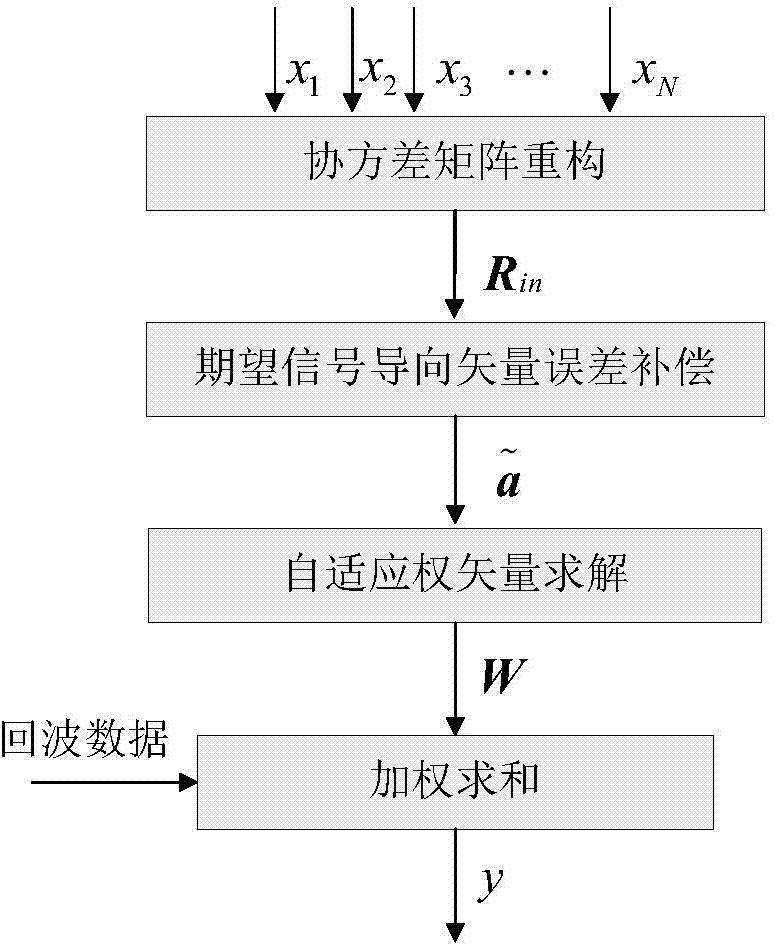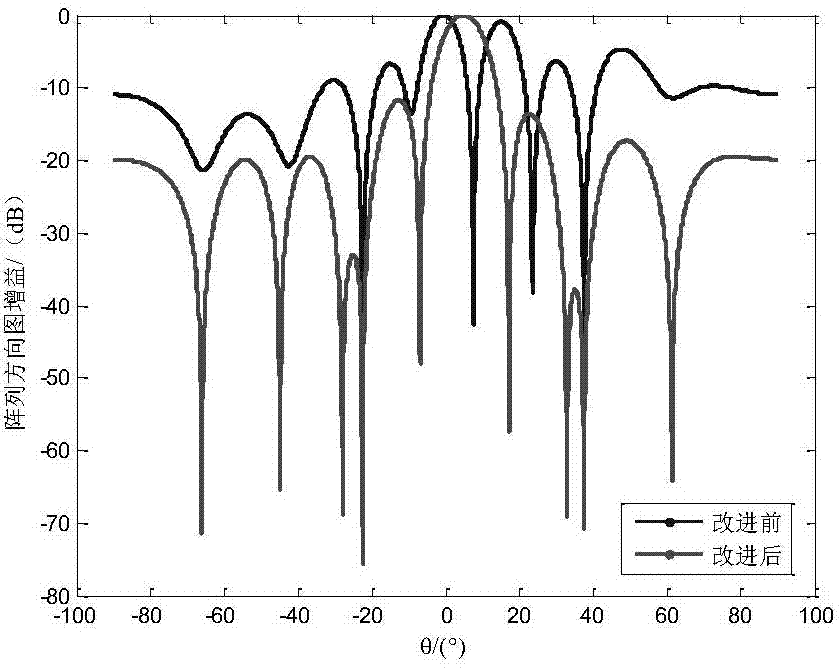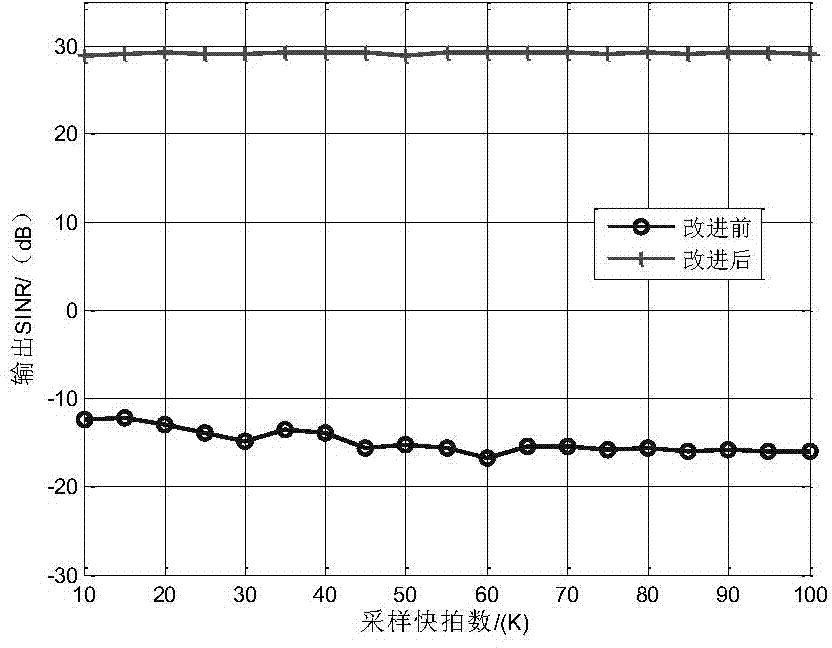Self-adaptive beam forming method based on covariance reconstruction and guide vector compensation
An adaptive beam and steering vector technology, applied in space transmit diversity, radio transmission systems, electrical components, etc., and can solve problems such as adaptive pattern distortion, main lobe deformation, and adaptive pattern deformation.
- Summary
- Abstract
- Description
- Claims
- Application Information
AI Technical Summary
Problems solved by technology
Method used
Image
Examples
Embodiment Construction
[0043] The present invention will be described in detail below with reference to the accompanying drawings and examples.
[0044] The present invention provides an adaptive beamforming method based on covariance matrix reconstruction and steering vector error compensation. First, the eigenvalue decomposition is performed on the sampling covariance matrix, and the noise subspace is estimated by using the MDL criterion, and then the Root-MUSIC method is used. Estimate the incident angle of the signal source, and judge the incident angle of the desired signal, and then reconstruct the new interference plus noise covariance matrix; then compensate the mismatch of the desired signal steering vector by solving the quadratic constrained quadratic programming problem; finally The adaptive weight vector is obtained by using the reconstructed new interference-plus-noise covariance matrix and the revised steering vector. The specific implementation process is as follows figure 1 As show...
PUM
 Login to View More
Login to View More Abstract
Description
Claims
Application Information
 Login to View More
Login to View More - R&D
- Intellectual Property
- Life Sciences
- Materials
- Tech Scout
- Unparalleled Data Quality
- Higher Quality Content
- 60% Fewer Hallucinations
Browse by: Latest US Patents, China's latest patents, Technical Efficacy Thesaurus, Application Domain, Technology Topic, Popular Technical Reports.
© 2025 PatSnap. All rights reserved.Legal|Privacy policy|Modern Slavery Act Transparency Statement|Sitemap|About US| Contact US: help@patsnap.com



